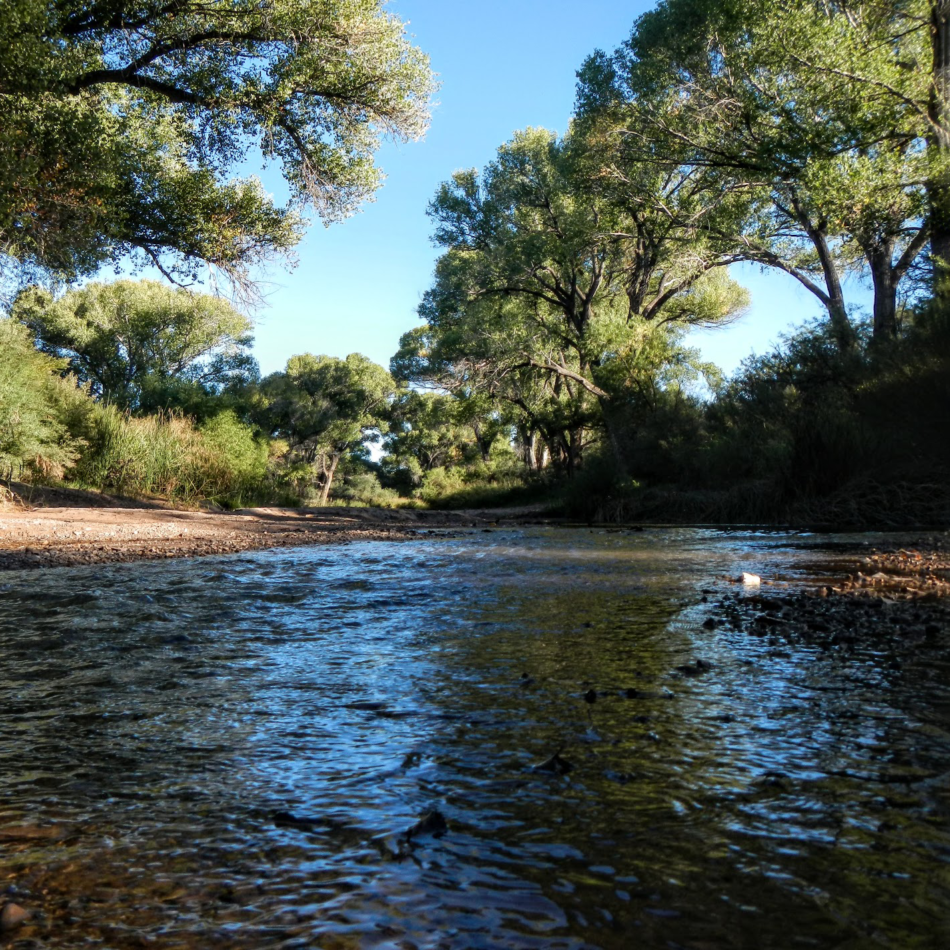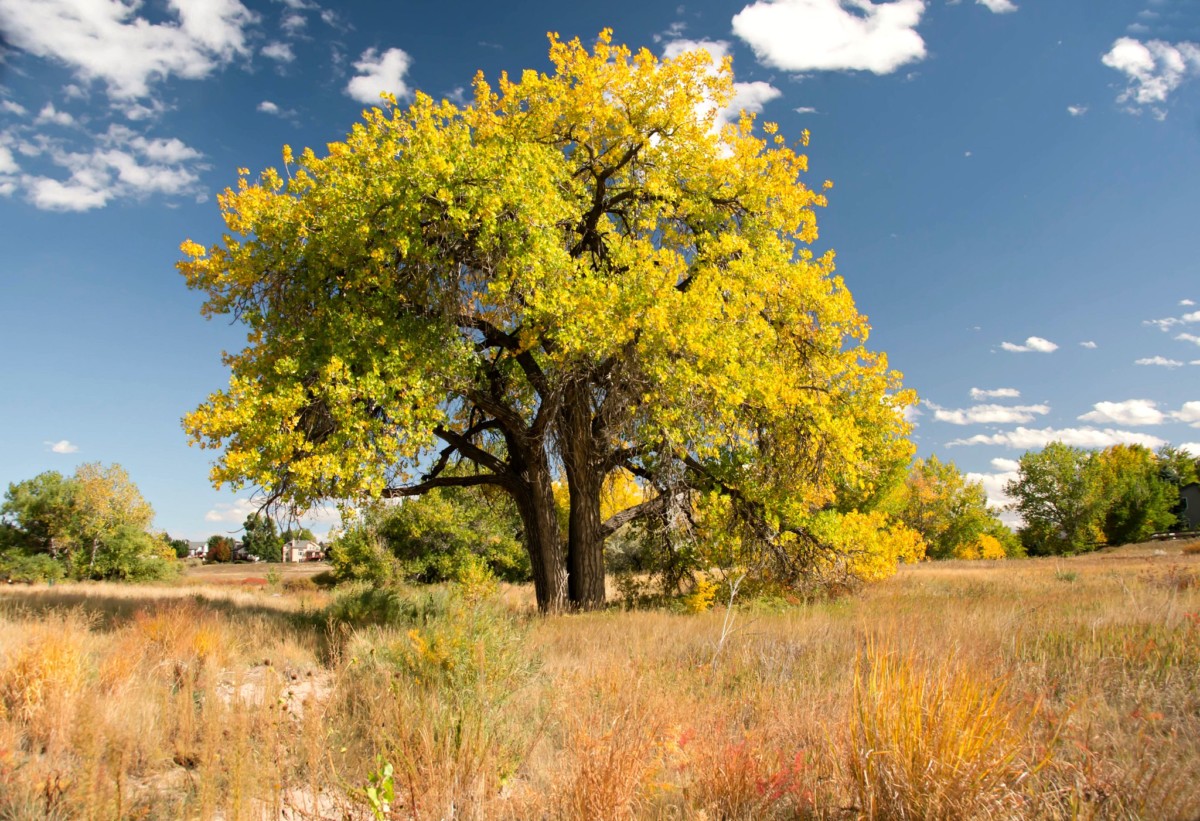Written by Aleidys Lopez Romero
This week we turn our attention to an important indicator of water and a sight for sore eyes on long Spring Seeker trips: the Fremont cottonwood (Populus fremontii).
Often seen standing beside willows and shrubs, the cottonwood is a fast-growing tree excellent for the revegetation of riparian ecosystems. As a pioneer species, it’s one of the first plants to colonize an area after a flood, making it vital for erosion control through riverbank stabilization.
This native, deciduous hardwood tree can stand over 100 feet tall and live for more than 130 years. It has bright green heart-shaped leaves that turn a vibrant yellow in the fall. And it has rounded catkin flowers that grow fruits in what may resemble a cloud of cotton.
Native to the southwestern U.S. as well as the Sonoran and Chihuahuan deserts of Mexico, these trees offer vital nesting and perching habitat for local predatory birds like eagles and hawks. Their canopies also provide great shade cover for hot, desert areas.
Unfortunately, cottonwood populations have been declining in recent years due to cattle grazing, introduction of exotic plants, dams, and other human activities. But new efforts to replant cottonwood saplings offer some hope that future generations will know their magnificence.
Sources



